(plus an attempt to photograph diving gannets!)
BACK
TO
WEATHER-BLOG
MENU
New!
Fine
Art
Prints
&
digital
images
for
sale-
Welsh Weather
& Dyfi Valley landscapes Slide-Library - Click HERE
| It's
Midsummer's
day
and
the
rain is hammering down out there as yet another
line of showers pushes in over Machynlleth. Conditions have remained
unsettled, with the occasional exception, with an active Atlantic
letting low after low drift its way across the UK, and with little real
sign of a change until - perhaps - July. There are hints of dryer
conditions then - no heatwave as such - but a break from the
Sou-Westerlies would be met with approval from most of us, especially
farmers and fishermen. Although heavy showers and thunderstorms have been around on a number of days, mostly they have not been worth intercepting. In the dominant SW airflow, at this time of year storms form over the land and move away NE quickly, meaning that they have to be chased over long distances for images. With the cost of diesel, this is not really an option right now! On June 10th, strong forecast instability coincided, for a change, with a much slacker airflow, meaning that storms would move much more slowly. I thought I'd see what I could get for a gallon of fuel and headed SE to the top of the Machynlleth-Llanidloes Mountain Road. Looking north, some towers were building lazily, but didn't seem to be especially vigorous: 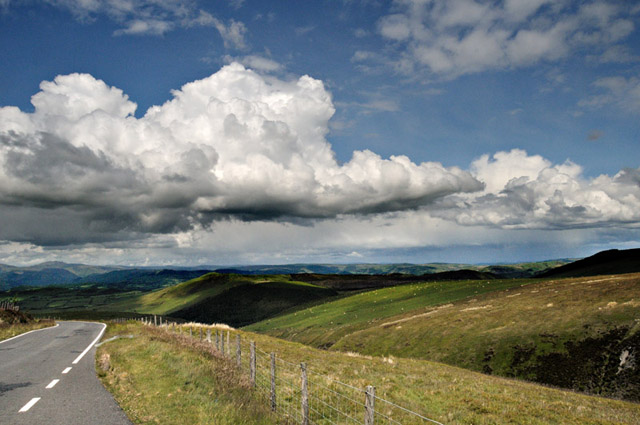 On the south side of the pass, a mature cumulonimbus was visible to the SSW. With the SW steering-flow, this would drift into range: 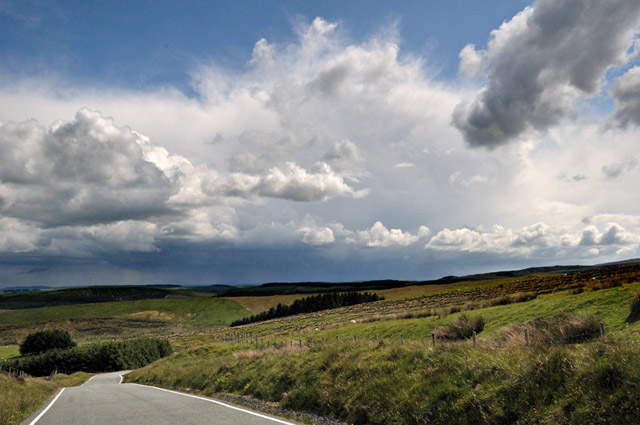 As it neared, I spotted a shelf-cloud - at cloudbase, to the LHS of the rain-shafts - protruding like, well, a shelf. I figured this would be worth a closer look. Heading down through Dylife and Staylittle, I took a narrow lane that crests and then follows a broad, undulating ridge..... 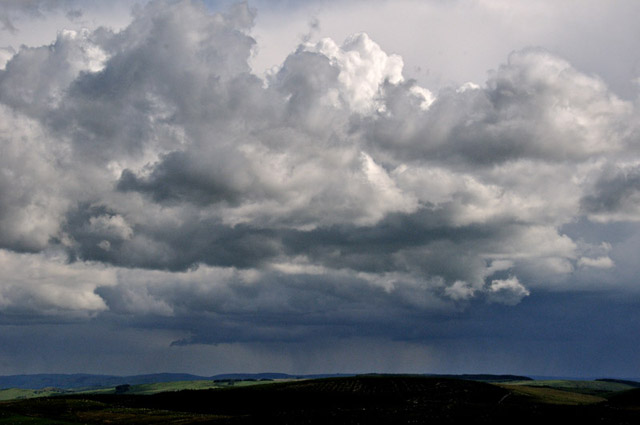  Such features occur along mature gust-fronts - the cloud condenses as the storm-cooled air spreads out near ground-level and lifts the ambient air to its condensation level. They can come in all shapes and sizes - this was a particularly linear example. The shot below was a bit closer: 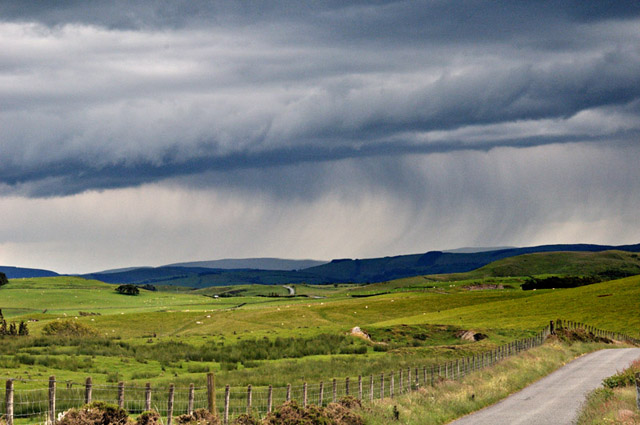 And looking right along it. At this point, lightning started up to the right of the field of view. I headed on, reaching a vantage-point overlooking Llyn Clywedog with a clear view to the S, SW and SE.... 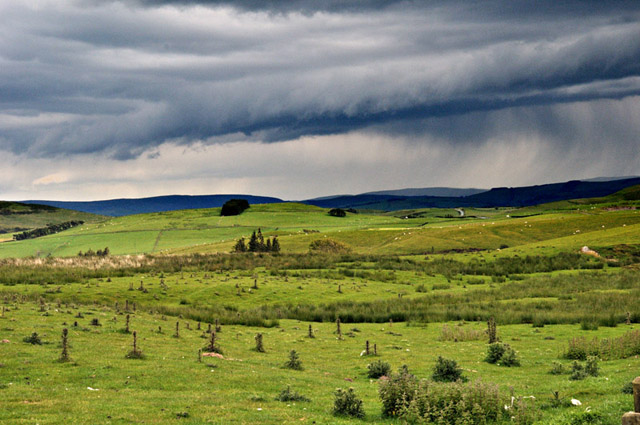 The storm was clearly getting its act together now: 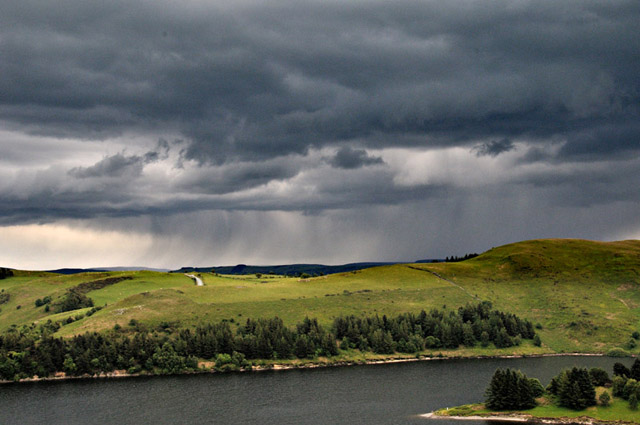 Mammatus canopy on the back of its anvil to the SW.... 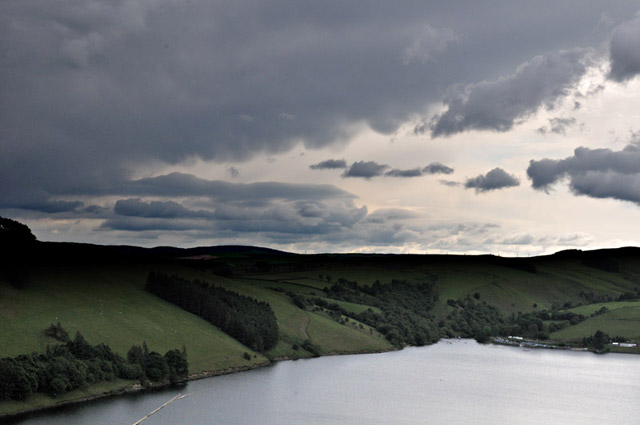 Torrential rain (and likely hail) was falling from the main core; within this, lightning was infrequent but nicely visible, just a mile or two away, with deep booming thunder echoing around the hills:  After about half an hour, the storm had cleared off towards Newtown and I headed home. Reaching the valley, I saw a sharp new cell developing to the NW (the steering-winds having veered sharply) which was heading straight for Machynlleth. Remembering that my cold-frame was open in the veg-garden, I headed over to sort that, and by the time I was back in town the hail was coming down copiously, rivers of rainwater and floating hail-slush running down the streets:  Just SE of town is the golf-course so I headed out there to get a shot of the hail accumulating! 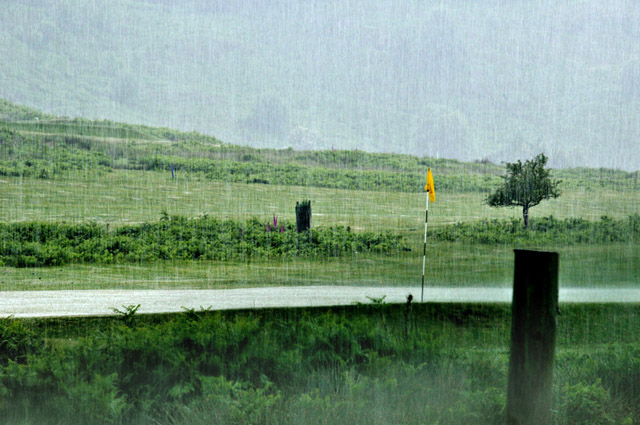 The local beaches have recently been so weed-bound that they are mostly unfishable. A couple of forays is all that has been possible, but the first of these brought a notable catch in the shape of a personal best bass of 10 to 11lbs in weight and 77cm in length. I put the fish back - females of this size are prime breeding stock - and besides, they are not particularly good eating. Bass in the 3-5lbs range are best - and they'll fit in the oven of my titchy gas-cooker! On another occasion I tried Borth only to find the beach strewn with weed and debris.... 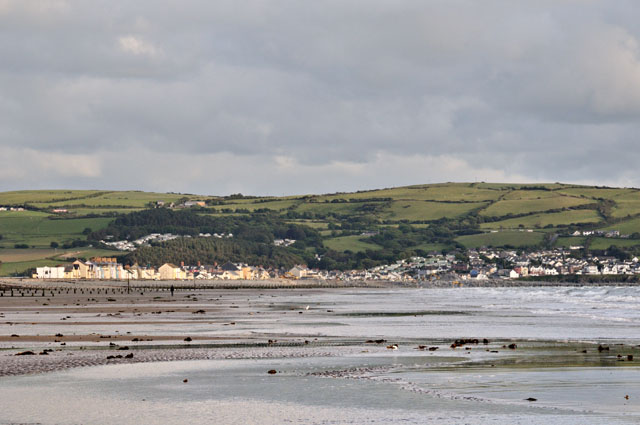 The surf looked lovely but in fact was chocker with weed too - it was almost soup-like in places. I abandoned the fishing and waded out into the breakers as this beautiful cirrus came overhead: 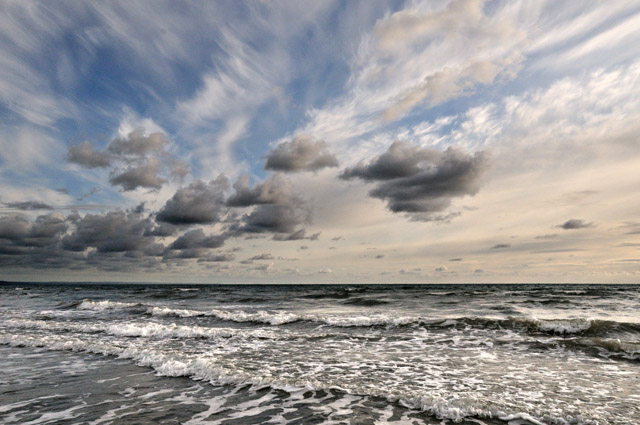 Amongst the debris washing ashore were many jellyfish, including these spectacular Bluefire jellies (Cyanea lamarkii). Large bubbles and froth were everywhere too - evidence for an algal or planktonic bloom, a common early Summer occurrence. It was only when converting the image below from RAW that I realised I had caught my reflection - entirely unintentionally! 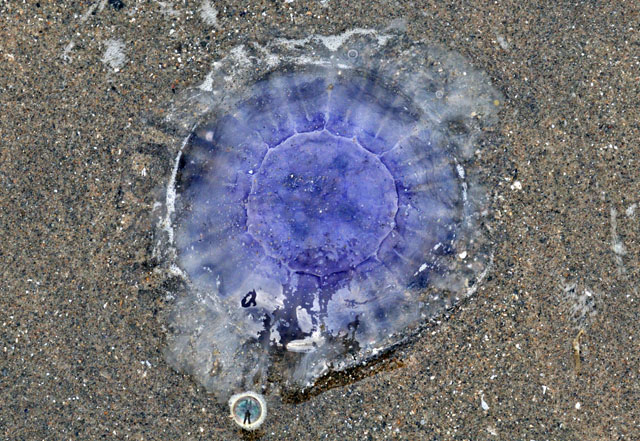 Also present were hundreds of By-the-wind Sailors (Velella velella). I've featured these small cousins of the Portugese Man O'War on here before but I think this is a far better image. They drift around wherever the wind takes their little upright sails.... in this case to stranding on the sand! 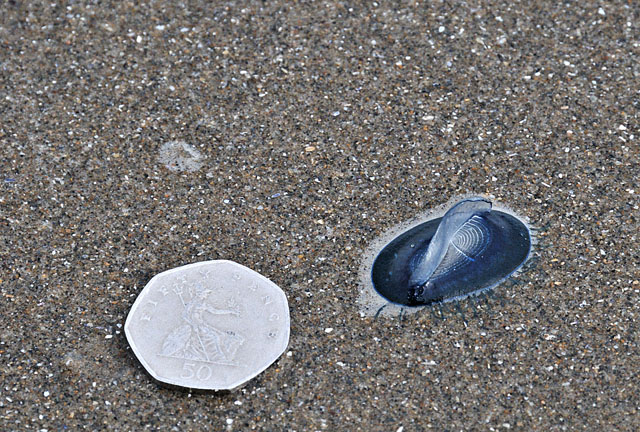 One day, a transient ridge of high pressure allowed a fishing-visit to Bardsey Sound. Although the sea was a bit choppy, winds were dropping away so I set to and bagged up on mackerel and sunshine! 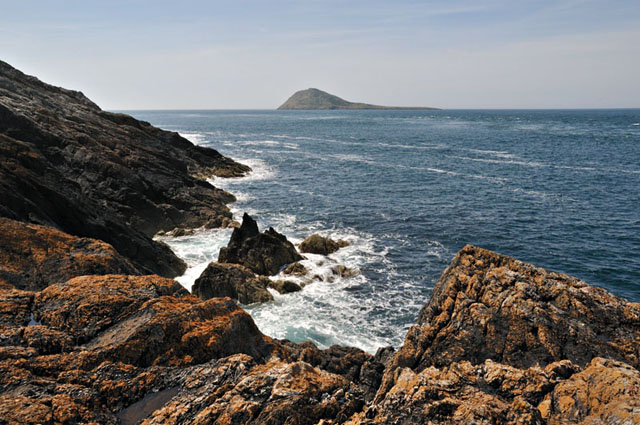 The gannets had the same idea about the mackerel. They were a bit far out for a decent photo (this is a digital crop from full telephoto) but I managed to catch a sequence of shots of one diving: 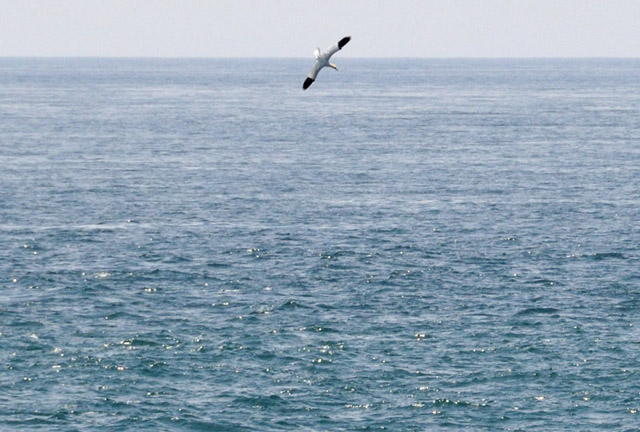   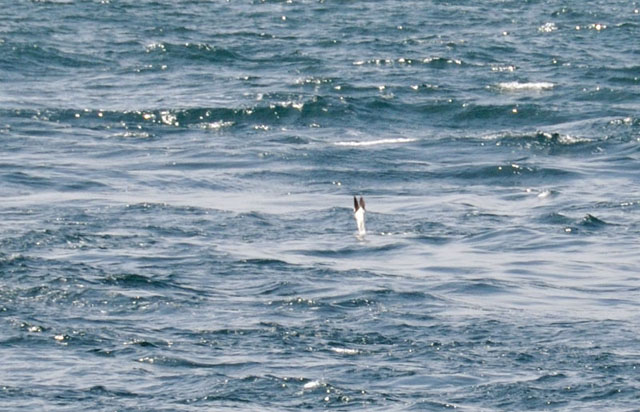 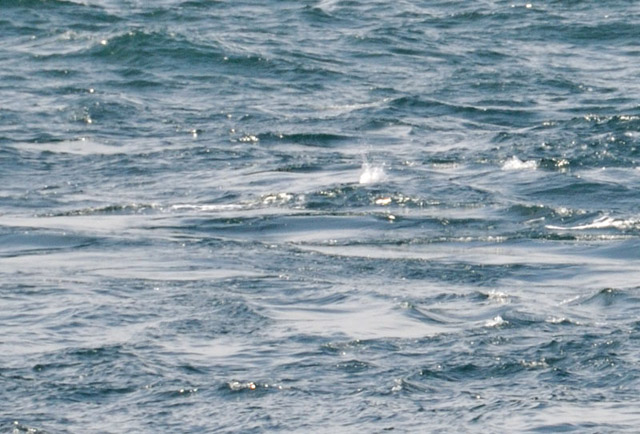 A very tricky subject! The timing was OK but exposure is difficult to get right - the highlights of the gannet's plumage tend to burn out when shot close to the darker water. The shot three above is the poorest - I've pulled the exposure compensation back a bit and then one loses the lustre of the sea surface. I guess being closer is essential and also perhaps a dull day would be better - the sky was rather diffuse so there was a lot of glare. A great challenge though, to try and get some decent shots! Slower, larger and closer targets are much easier! 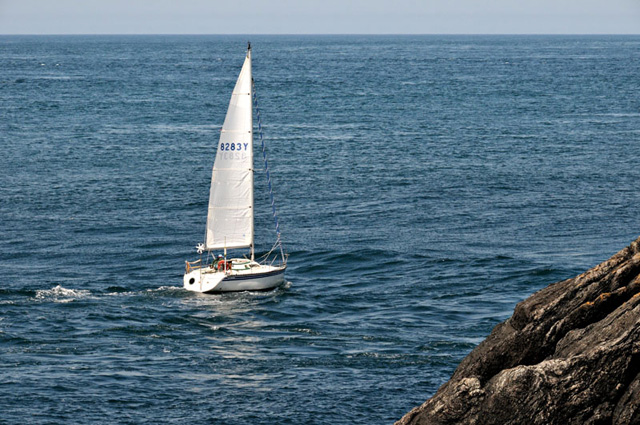 On the garden front, a creeping buttercup cull was required. Most non-food plants that have over-invaded get composted but this is one tough critter, so it has to be incinerated.... 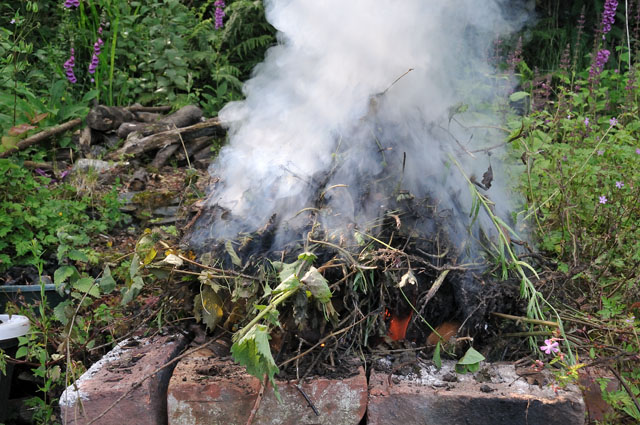 The ash is still useful - with burnt soil mixed-in, it's a useful source of minerals, so is worth putting through a sieve.... 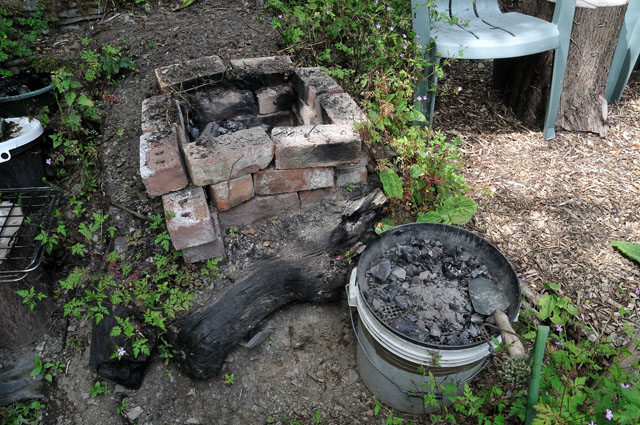 ...and tipping onto the vegetation placed on the compost-heap.  The garden's going mostly OK this year, although a second planting of runner beans was required. Something dug up most of the first lot when they were just getting going! 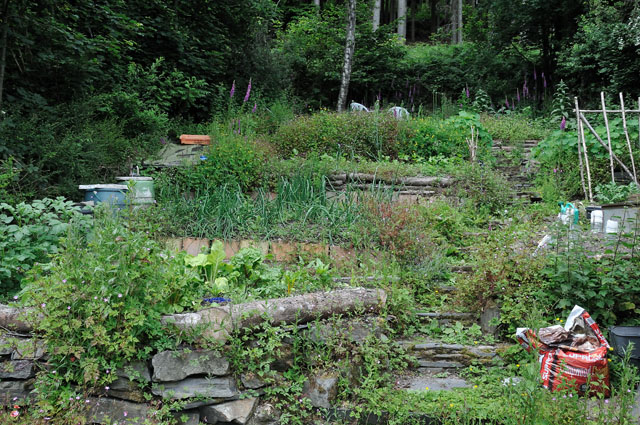 It's good to leave some corners free for Nature to do its thing:  Mostly I keep the veg-beds clearer, but now the garlic has grown to full height, with the plants slowly dying back now, I've let the herb robert (Geranium robertianum) run riot - it won't do any harm, and it is a tremendous attractor to pollinating insects. It seeds itself all over the garden and provides a bit of cheerful colour, too: 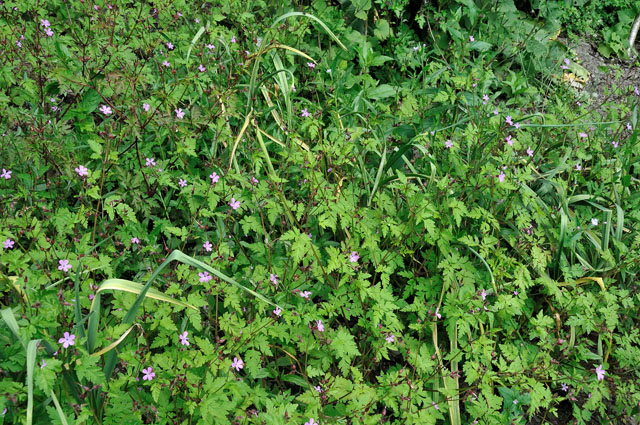 The good news is I've noted a big increase in honey-bees of late - that has to be good in the face of the strains this species has been under:  Butterfly species #12 for the year was also noted on the same afternoon - the Large White! Time to be vigilant with the broccoli plants - they seem to be making a recovery from the major slug-offensive of early June. More soon! |
|
BACK TO WEATHER-BLOG MENU New! Fine Art Prints & digital images for sale- Welsh Weather & Dyfi Valley landscapes Slide-Library - Click HERE |